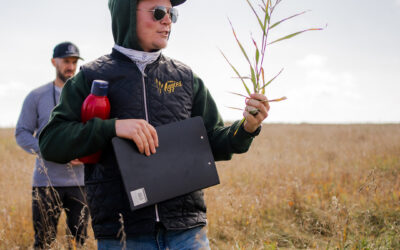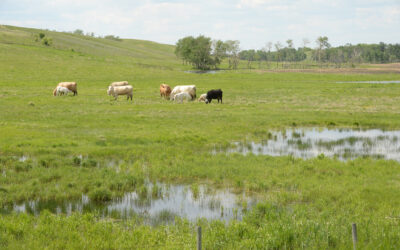For their first-ever demonstration farm site in 2005, ALUS Norfolk established a 30-foot buffer strip along a dry creek drain that bisects Vic Janulis’ farm. The purpose of this project was to help protect local water quality by preventing sediment and nutrients from the farmed fields from entering the creek.
The buffer strip was originally seeded with creeping red fescue and white dutch clover, vegetation that provides good control of erosion and sedimentation while also standing up to occasional farm-vehicle traffic. It eventually evolved from what was initially seeded, but Vic mows once annually to keep woody plants at bay.
The buffer started functioning well in year two, grew to full height in year three, and had a noticeable effect on water quality by year four.
In this series of photos, follow the nine-year evolution of the very first ALUS Norfolk demonstration project.
STEP 1

Vic burned the heavy corn stubble along the drainage creek in April, 2005. This photo is looking northeast or upstream.
STEP 2
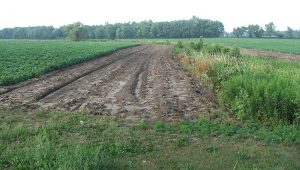
In July 18, 2005, we delineated the 30-foot buffer area along the drainage creek. It is now ready to sow with creeping red fescue and white dutch clover.
STEP 3
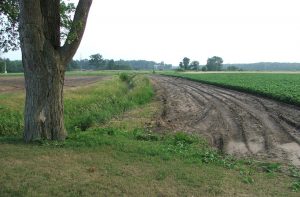
Also taken on July 18, 2005: On the right is the delineated 30-foot buffer area between the creek and the field (planted in soy that year), looking southwest or downstream, ready to seed. On the left, Vic decided to plant the entire corner of the field with a domestic meadow mixture, as the 30 foot buffer strip would leave the remainder of the field to small and inefficient to farm. If you look closely, you can see some of Vic’s peacocks in the cleared strip.
STEP 4
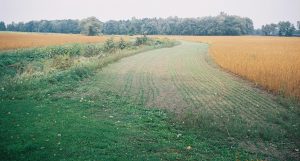
The buffer strip on September 22, 2005, after its summer seeding.
STEP 5

In year two, the new vegetation is well established throughout the buffer zone. This photo, which was taken June 28, 2006, shows watercress covering the entire creek surface, except the sand and sediment trap on the drainage outlet, used by the Norfolk County Drainage Department. Vic maintains several bluebird nesting boxes along the refurbished drainage creek.
STEP 6
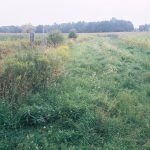
On August 30, 2008, three years after establishing the project, the vegetation now forms a well established buffer between the working land (now planted in corn) and the surface water in the drainage creek.
STEP 7:

In order to manage and maintain his ALUS project, Vic needs to mow the buffer strip each year to prevent woody plants from invading.
THE FINAL RESULT:
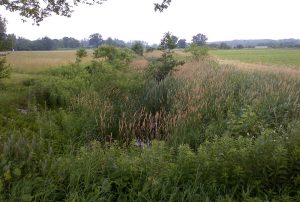
This photo on July 2, 2013 shows a well established vegetative buffer, nine years after its initial seeding. The vegetative mixture has evolved from what was initially seeded, but the ALUS project still performs as intended. In fact, there has been no need for the County Drainage Department to clean out the sand sediment trap since January of 2009, four years after planting the buffer: a clear indication that the project is working well.
THE FARMER:

ALUS Norfolk participant Vic Janulis in front of his ALUS project in Norfolk County. (Photo courtesy Better Farming magazine, January 2006 Special Edition).


